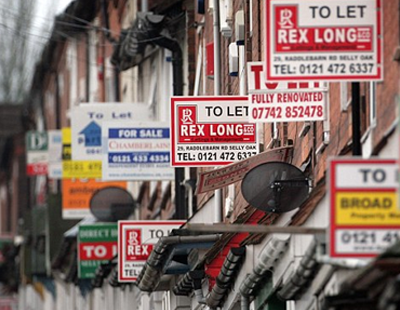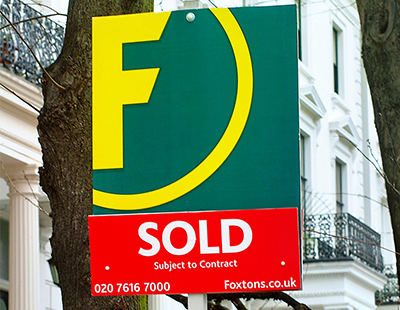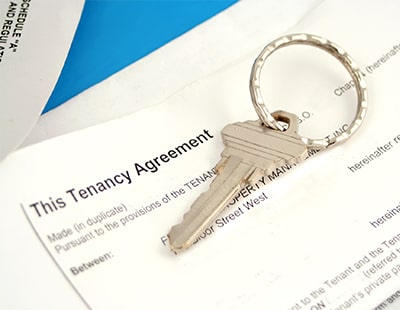A shortage of properties available to rent coupled with strong demand from tenants has led to notable rental price increases across Britain, new figures show.
The average cost of a rental home in Great Britain increased 2.1% year-on-year in November 2019, almost double the 1.1% recorded in November 2018, according to the latest Monthly Lettings Index from Hamptons International, part of Countrywide Group.
The average rent of a newly let home in November 2019 rose to £989 per calendar month (pcm), which is £20 more a month compared with the corresponding period last year.
Average rent of new lets (pcm)
|
Region
|
Nov-19
|
Nov-18
|
YoY
|
|
Greater London
|
£ 1,724
|
£ 1,705
|
1.1%
|
|
South West
|
£ 851
|
£ 801
|
4.2%
|
|
South East
|
£ 1,076
|
£ 1,034
|
4.1%
|
|
Scotland
|
£ 673
|
£ 664
|
1.5%
|
|
Midlands
|
£ 694
|
£ 686
|
1.2%
|
|
North
|
£ 641
|
£ 640
|
0.2%
|
|
East
|
£ 984
|
£ 959
|
2.6%
|
|
Wales
|
£ 671
|
£ 658
|
2.0%
|
|
Great Britain
|
£ 989
|
£ 969
|
2.1%
|
Source: Hamptons International
Southern regions recorded the strongest rental growth this year, led by gains in the South West where rents were up 4.2% year-on-year in November. This was followed by the South East (4.1%) and the East of England (2.6%).
Meanwhile, the North recorded the weakest rental growth of 0.2% following last month’s fall, followed by Greater London (1.1%). The capital has recorded the weakest, or second weakest rental growth in November of the last four years.
Regional rental growth
| |
Nov 2019
|
Nov 2018
|
Nov 2017
|
Nov 2016
|
|
Fastest growth
|
South West
|
East
|
Midlands
|
East
|
| |
South East
|
Scotland
|
North
|
North
|
| |
East
|
Wales
|
Scotland
|
Scotland
|
| |
Wales
|
South West
|
Wales
|
South East
|
| |
Scotland
|
North
|
East
|
South West
|
| |
Midlands
|
Midlands
|
South West
|
Midlands
|
| |
Greater London
|
South East
|
South East
|
Greater London
|
|
Slowest growth
|
North
|
Greater London
|
Greater London
|
Wales
|
| |
|
|
|
|
| |
Great Britain (2.1%)
|
Great Britain (1.1%)
|
Great Britain (1.2%)
|
Great Britain (2.4%)
|
| |
Great Britain Exc London (2.5%)
|
Great Britain Exc London (1.7%)
|
Great Britain Exc London (1.6%)
|
Great Britain Exc London (3.2%)
|
Source: Hamptons International
The drop in the number of landlord purchases over the past 12 months has meant the volume of homes available to rent has fallen, particularly in London and the South. And this lack of new supply has driven rental growth.
There were 7.8% fewer properties available to rent during the first 11 months of 2019 compared with the same period last year. In the South of England however, where more landlords have sold up, there were 11.7% fewer homes available to rent.
Although landlord purchases have remained subdued throughout the year, there are signs that investors are starting to return to the market, particularly in London, according to Countrywide.
During the first 11 months of the year, landlords acquired 11% of homes sold in Great Britain, the same level as last year, but 5% lower than in 2015. But in November alone, the proportion of homes bought by investors increased to 12%.
London recorded a bigger rise in landlord purchases. Landlords purchased 13% of homes sold in the capital during the first 11 months of 2019, up from 11% during the same period of 2018. This was the first rise since 2015, but is in part due to fewer owner-occupiers transacting in the market.
The proportion of homes bought by landlords
|
|
First 11 months of each year
|
|
November of each year
|
|
|
GB
|
London
|
|
GB
|
London
|
|
2013
|
15%
|
16%
|
|
14%
|
16%
|
|
2014
|
15%
|
16%
|
|
14%
|
17%
|
|
2015
|
16%
|
19%
|
|
15%
|
16%
|
|
2016
|
14%
|
16%
|
|
13%
|
15%
|
|
2017
|
12%
|
14%
|
|
12%
|
15%
|
|
2018
|
11%
|
11%
|
|
11%
|
14%
|
|
2019
|
11%
|
13%
|
|
12%
|
16%
|
|
YoY Change
|
0%
|
2%
|
|
1%
|
2%
|
|
4Y change
|
-5%
|
-6%
|
|
-3%
|
0%
|
Source: Hamptons International
Aneisha Beveridge, head of research at Hamptons International, said: “Rental growth in Great Britain accelerated throughout 2019, moving back towards its long-term average. Average rents rose 2.1% in November 2019, nearly double the rate recorded last year. While rents rose in every region, the South led the way.
“Rental growth has been driven by a decrease in the number of homes available to rent. The tax and regulatory changes announced in 2016 have resulted in fewer landlord purchases, particularly in the South, causing some landlords to sell up.
“Landlords purchased 11% of homes sold in Great Britain so far this year, 5% less than the peak in 2015. However, after four years of falls there are now signs that landlords are beginning to return to the market - particularly in London where house price falls and steady rental growth are gradually enticing investors back.”
Want to comment on this story? Our focus is on providing a platform for you to share your insights and views and we welcome contributions.
If any post is considered to victimise, harass, degrade or intimidate an individual or group of individuals, then the post may be deleted and the individual immediately banned from posting in future.
Please help us by reporting comments you consider to be unduly offensive so we can review and take action if necessary. Thank you.















.png)






Join the conversation
Jump to latest comment and add your reply
Government should be asking why there is a shortage of homes to rent and reversing their anti landlord and thus anti tenant legislation.
If there is a shortage of any commodity then common sense illustrates that incentives emerge to counter the shortage. In the absence of government involvement the market will react by enabling higher prices to be charged and paid - hence the increase in rents and possibly signs that this is tempting some landlords back into buying mode, but this is a fragile change easily reversed if the government continues to act against its suppliers and consumers. If any of them had ever had real jobs they would know this already.
There are still too many rental properties available.
Until there are blank space in LA windows rents won't appreciably increase.......................................unfortunately.
There is still too much supply.
Hopefully this will reduce with all the anti-LL attacks by this stupid Tory Govt.
I will be one of the LL leaving the AST sector forced out by bonkers Tory policies.
So that will be 5 properties lost to future tenants as none of my properties will be bought by LL or existing or former tenants or FTB.
What is happening is that the rental stock that is available the LL of those properties are becoming a lot pickier over who they take on as tenants.
Previously you just needed a pulse and most LL would take you on.
What with the totally expected and predicted UC debacle along with the other bonkers PRS regulations LL are naturally very careful over who they take on to the point they would rather a property empty than take on anything other than a quality tenant.
I know for a fact that there are at least 30 aspirant tenants with even more arriving in January; all Ryanair cabin crew who cannot find a LL prepared to take them on.
I have taken on some of them but have run out of available properties to let to them.
There are plenty of properties available but for some reason LL don't wish to let to cabincrew!
So these cabincrew are paying £112 per week for hotel accommodation.
Surely a missed opportunity for LL.
I have found 99% of the time that Cabincrew are OK.
So it is the case that good tenants are being refused by LL who are suffering void properties.
Don't understand why.
So it is all very well having available stock but if it isn't used then that puts further upward pressure on rents.
It would seem the old simplistic ways of letting have now gone and that there are far more nuances to LL behaviour than used to be the case.
They can hardly be blamed for such changed behaviours based on the bonkers regulations that have been introduced since 2015.
These silly regulations are only going to get worse and so more LL will withdraw from the AST market or continue to be far more selective as to whom they take on as tenants.
It will not be very pleasant for LL but will be far worse for tenants who only have dwindling rental supply and increasing rents to look forward to!!!
Please login to comment